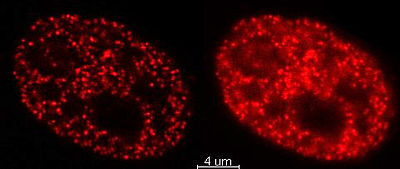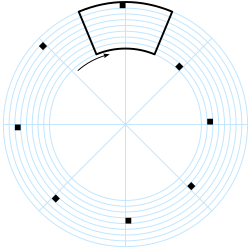Minsky Confocal Reflection Microscope
| In general, the contents of United States patents are in the public domain.
In specific cases, patent applicants and holders may claim copyright in portions of those documents. In those specific cases, applicants are required to identify the portions that are protected under copyright, and are additionally required to state the following within the body of the application and patent (see 37 CFR 1.71(d) & (e) and 37 CFR 1.84(s), and MPEP § 608.01(e) & (w) and MPEP § 1512):
The original patent should be checked for the presence of such language before an assumption is made that the contents are in the public domain. (This template can be replaced by {{PD-US-patent-no notice}} in such cases.)
|
Relevante Bilder
Relevante Artikel
KonfokaltechnikDie Konfokaltechnik umfasst eine Reihe von optischen Messverfahren, die auf dem Konfokalprinzip basieren: Zwei optische Systeme oder Strahlengänge sind konfokal, wenn sie einen gemeinsamen Brennpunkt besitzen. .. weiterlesen
KonfokalmikroskopEin Konfokalmikroskop ist ein spezielles Lichtmikroskop. Im Gegensatz zur konventionellen Lichtmikroskopie wird nicht das gesamte Präparat beleuchtet, sondern zu jedem Zeitpunkt nur ein Bruchteil davon, in vielen Fällen nur ein kleiner Lichtfleck. Diese Beleuchtung wird Stück für Stück über das Präparat gerastert. Im Mikroskop entsteht also zu keinem Zeitpunkt ein vollständiges Bild. Die Lichtintensitäten des reflektierten oder durch Fluoreszenz abgegebenen Lichtes werden folglich nacheinander an allen Orten des abzubildenden Bereiches gemessen, so dass eine anschließende Konstruktion des Bildes möglich ist. Im Strahlengang des detektierten Lichts ist eine Lochblende angebracht, die Licht aus dem scharf abgebildeten Bereich durchlässt und Licht aus anderen Ebenen blockiert. Dadurch gelangt nur Licht aus einem kleinen Volumen um den Fokuspunkt zum Detektor, so dass optische Schnittbilder mit hohem Kontrast erzeugt werden, die fast nur Licht aus einer schmalen Schicht um die jeweilige Fokusebene enthalten. .. weiterlesen

























